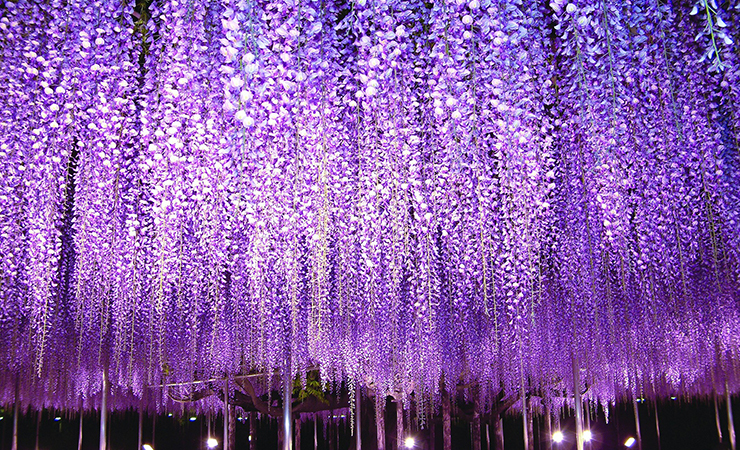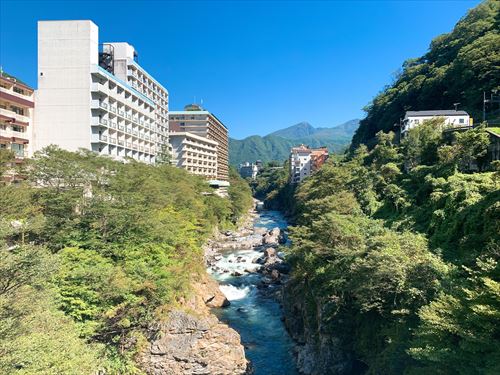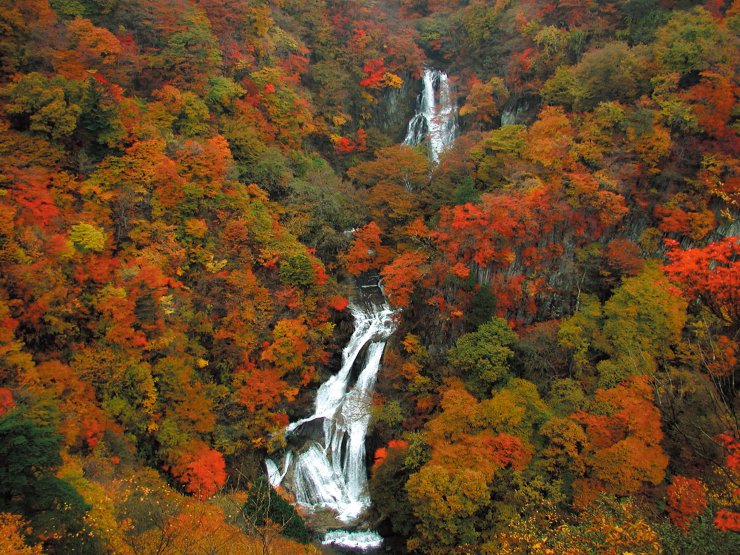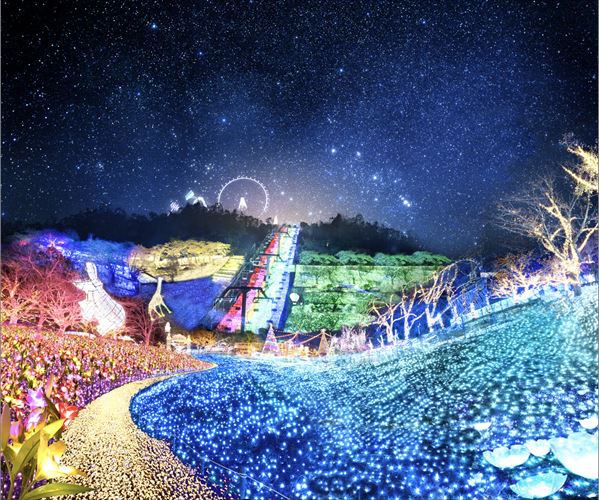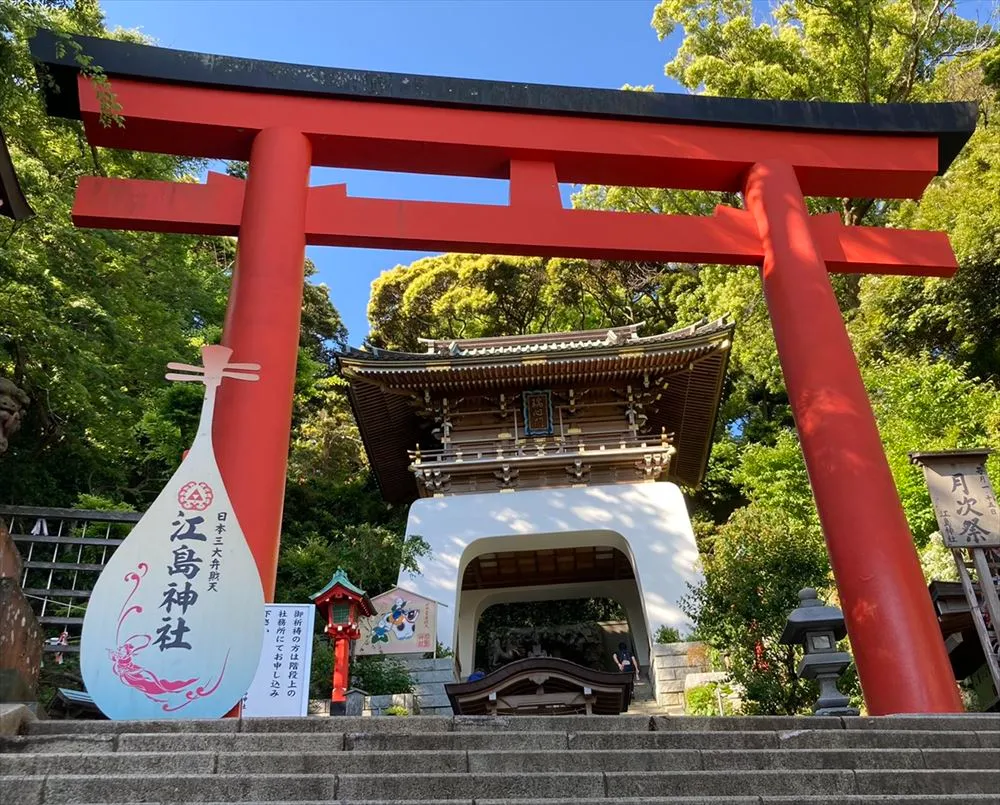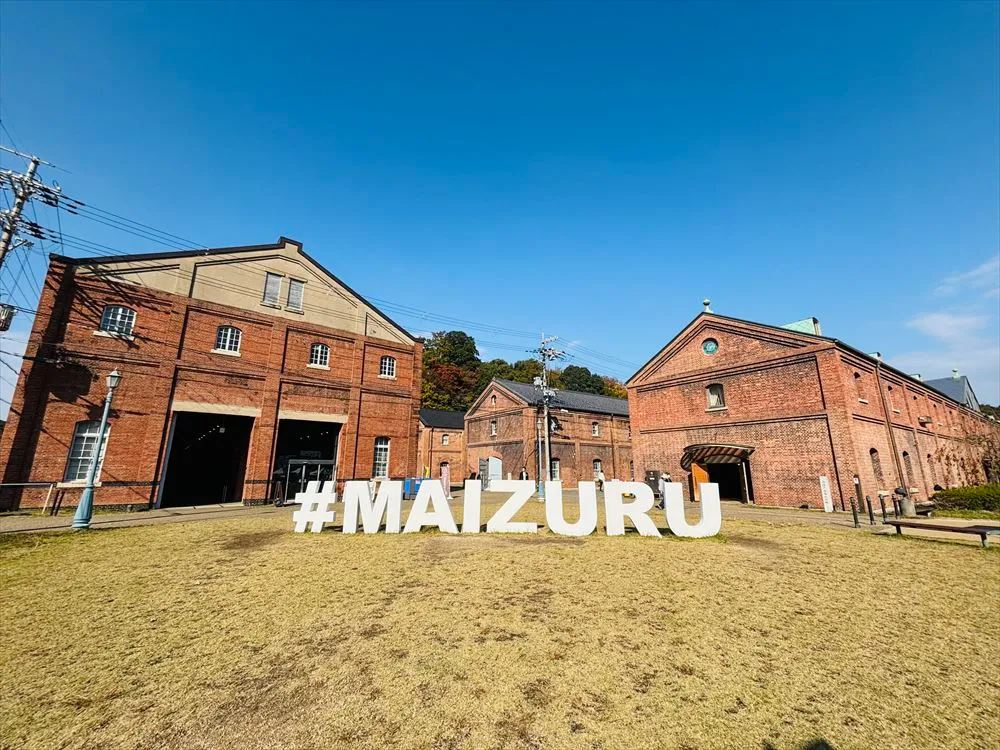Prefecture boasts the splendid World Heritage site of Nikko, beautiful mountains and rivers, historical buildings and good hot springs. It is easy to go to from Tokyo, so this is a must-go place.
NIKKO / TOCHIGI
World Heritage Site and Grand Nature: Nikko
Two shrines and one temple (Furatasan Shrine, Toshogu Shrine, and Rinno-ji Temple) and ruins surrounding them are designated as a Unesco World Heritage site in the “Nikkosannai” area that is about five minutes by bus from Nikko Station. Representative Japanese religious architectural structures and the mausoleum of Tokugawa Ieyasu, the founder of the Edo shogunate, are highlights of the area’s sightseeing.
At Toshogu, the shrine dedicated to Shogun Tokugawa Ieyasu, visitors flock to see the Yomeimon Gate (Gate of Sunlight) decorated with over 500 ornate gilt wood carvings and vivid colors, and the charming “three wise monkeys” that symbolize the principle of “see no evil, speak no evil, hear no evil” taught in childhood. The One Thousand Samurai Warriors Procession is presented at the semi-annual shrine festivals held each year in spring and autumn.

At the temple’s main building and the Sanbutsudo Hall (Hall of the Three Buddhas) in Rinno-ji Temple, there are three large gilt statues of the three deities enshrined in the temple: the Amida-Nyorai Buddha, the Senju (thousand-armed) Kannon, and the Bato (horse-headed) Kannon. Rinno-ji’s Taiyuin, which is the mausoleum of the builder of Toshogu Shrine, has a calm, stately atmosphere, and 315 lanterns standing like a forest on the temple grounds are also very impressive.
Nikko Futarasan Shrine is historically dedicated to Mt. Futara (also known as Mt. Nantai) as its sacred mountain. From the back of the main approach a stone-paved path runs through woods abounding with huge rocks, springs and waterfalls, and it is about 1 km to the detached shrine, Takinoo Shrine. “Undameshi no torii” – the sacred gate of the test of luck – is built in the middle of the road to the shrine, and here you can try your luck by throwing pebbles three times to the center hole, and the number of the stones going through the hole will tell you the degree of your good or bad fortune.
The area after passing over the Irohazaka mountain pass including Yumoto Onsen is called “Oku-Nikko,” or outlying Nikko, and abounds in natural scenic spots such as lakes, waterfalls, grassy meadows, and marshlands. Mt. Nantai is 2,486 meters in height. This is good place for hiking from spring to fall.
Lake Chuzenji formed in the blocked valley that was created by the eruption of Mt. Nantai about 20,000 years ago. This area is one of the sacred places for mountain worship. The area is also popular as a summer resort and a resort villa.

Kegon Falls, a fall of 97 meters, is classified as one of the Three Most Beautiful Waterfalls in Japan.

Senjogahara is a highland moor spreading out at an altitude of 1,400 meters above sea level. Various kinds of animals and plants inhabit the marshland, and alpine plants are particularly beautiful during summer.

Yuba is a local specialty of Nikko. It is a processed food of the soybean, and is a delicacy composed of layers of the skin of boiled soybean milk. It was originally a portable food for Buddhist priests.

The largest hot springs in the Kanto district: Kinugawa Onsen
When you go a little further by train from Nikko, you will come to Kinugawa Onsen, which is one of the largest hot springs in the Kanto district and there are many Japanese-style inns and hotels along the grand gorges of the Kinugawa River.

In the Edo period (1603-1868), when the onsen was founded, only Buddhist monks and feudal lords were allowed to use it, but then since the late 19th century it has been open to the public. Nearby are Edo Wonderland, in which Edo style streets and scenes are reproduced, and Tobu World Square which exhibits on a one-25th scale replicas of famous buildings of the world.


Tobu Railways limited express trains run from Asakusa in Tokyo to Nikko and Kinugawa, and, also, using the direct connection from JR Shinjuku to Tobu Railways limited express is convenient. Either way is about a 2-hour trip.

Central Tochigi Prefecture: Utsunomiya
Utsunomiya City is the prefectural capital of Tochigi Prefecture. Ooya Stone is a kind of tuff and is quarried in the western part of Utsunomiya for use as a building material. It was used for the Imperial Hotel that was designed by Frank Lloyd Wright in 1922, and at present the main entrance part of the hotel is preserved and exhibited in the outdoor museum Meiji-Mura in Aichi Prefecture. The Ooya Stone Museum and Ooya Heiwa Kannon (Goddess of Mercy) also are good places to visit.

Recently gyoza (Chinese dumpling) has become a specialty of Utsunomiya and is very popular. There are many gyoza-only restaurants in the city, and many tourists visit the city to enjoy the specialty.


Storehouse Town: Tochigi
Tochigi had flourishing exchanges with Edo (present-day Tokyo), and it is sometimes called “Ko-Edo” (Little Edo) because of its remaining Edo-style residences. The city flourished as a mercantile city which had the advantage of transport to Edo by water via the Uzuma River running north and south in the center of the city, and was a post station of the Reiheishi Kaido route that emissaries called “reiheishi” sent by the Edo government to Nikko Toshogu traveled along.
Tochigi’s main attraction is perhaps its retro streets where princely storehouses and old Western-style buildings still stand. Between the main street where mercantile houses and storehouses stand, and the Kourai Bridge over the Uzuma River, many plaster-clad storehouses are lined up side by side. Thus as you walk about here you may feel as if you have slipped back in time to the Edo period.
On the Uzuma River, where carp are swimming, you may romantically enjoy the storehouse views and the river breezes as you ride a sightseeing boat (April to September, 12:00 to 16:00 everyday, except when raining). The Tsukada Museum of History and Legend beside the Korai Bridge was once the residence of a wealthy merchant named Tsukada who ran a timber trade firm, and its black fence and white clay wall storehouse is one of the representative sights of Tochigi. Going north from the Kourai Bridge, you will come to the Dashikaikan (Hall of Doll Floats) and Kuranomachi Museum of Art. On the other side of the Uzuma River, there is the Yokoyama Kyodokan (Folk Museum). It was formerly the residence and business premises of a wealthy merchant who ran a hemp wholesale business on the right side of the shop and a bank business on left side in the Meiji period (1868-1912).

Tochigi was the prefectural capital of the old Tochigi prefecture (the south part of Tochigi Prefecture and a part of Gunma Prefecture) until 1884, and its official remnants can be seen in the moats, which are called Kenchobori (moats of the prefectural capital). The Annex of Tochigi City Hall is an elegant Western-style structure built in the Taisho period (1912-1926). Strolling around and seeing museums converted from renovated storehouses and clay storehouses of old families, and Taisho period modern-looking Western-style buildings in the town is enjoyable.
Tochigi’s local specialty is Tochigi fried noodles containing potato, and they have the good old common taste such as we enjoyed at the neighborhood sweets shop in old days.

It takes about 70 minutes from Asakusa to Tochigi by limited express train on the Tobu Nikko Line. Or, about 80 minutes from Shinjuku by direct limited express via JR and Tobu lines. If you use the Tohoku Shinkansen bullet train, change at Oyama Station to JR Ryomo Line and it takes about 10 minutes from Oyama to Tochigi. You can fully enjoy walking around the town in half a day.
Ramen Town: Sano
Sano is the neighboring town of Tochigi.
The Soshu-ji Temple is one of the three major temples famous for yakuyoke, or expelling evil spirits, in the Kanto district. This temple of the Tendai sect of Buddhism is commonly called Sano Yakuyoke Daishi, and is very crowded with worshippers during the time for New Year’s visits.
In recent years, Sano ramen has made the name of Sano popular throughout Japan. The clear soy sauce-base soup is its staple taste.

Sano Premium Outlets opened in 2003, and some 180 domestic and overseas brands are brought together in buildings styled on East Coast cities of America. It takes about 20 minutes from Tochigi to Sano by train on the JR Ryomo Line.
Eastern Sho-Kyoto: Ashikaga
Ashikaga is in the southwestern part of Tochigi Prefecture, and the Watarase River runs through the center of the city. Ashikaga Gakko (Ashikaga School) is said to be Japan’s oldest academic institution, and was built in either the late Heian period (794-1192) or the early Kamakura period (1192-1333).
Passing through the massive gate with “Gakko” engraved on it, you may enter the large school premises. Classes took place in the square room with the thatched roof. There is a kuri, which is a temple-style eating facility and was used as a dining room, a shuryo that was used as students’ living quarters and other facilities.

Ashikaga is also called “Sho-Kyoto (Little Kyoto) in the East.” Brick buildings, Western-style buildings with delicate carvings, and Taisho-roman-style buildings dot the city landscape. Even now, most of these are still used as factories and shops.
The Banna-ji Temple near the Ashikaga Gakko still keeps the style of old samurai residences of the Kamakura period (1192-1134) on its mounds and moats surrounding the temple. A stone-paved street connects the Ashikaga Gakko to Banna-ji Temple. The town formerly flourished as a fabric industry town, and thus some Japanese kimono and old fabric stores still stand on the streets. There are also antique bookshops selling Japanese books of the Edo period. Stores selling rice crackers and anmitsu sweet parlors or eating parlors are best for food sampling while walking around.
Ashikaga Orihime Shrine, dedicated to the god of marriage, is in Ashikaga. The former Ashikaga Mohan Nenshi Factory (now Antares Sports Club) was one of the model twine factories that used to be built all over Japan, and is the only one that still physically exists. The former Ashikaga Orimono Corporation (now Tochisen Corporation) was a dye works with red brick walls built from 1913 to 1919. The former Kimura Exporting and Textile Factory office building (now Ashikaga Textile Museum) was the office building of a textile factory built in 1911.

赤レンガ捺染工場.webp)
Ashikaga Flower Park is a wisteria paradise with a 1,200 tatami-mat size (about 2,000 square meters) gigantic wisteria trellis, an 80-meter-long white wisteria tunnel, and in total about 300 wisteria trees. Koko Farm Winery is on the outskirts of the town, and you may tour vineyards or wineries, and enjoy lunch with a well-matched wine.

Getting to Ashikaga takes about 70 minutes from Asakusa by limited express train on the Tobu Isezaki Line. It takes about 50 minutes from Oyama on the JR Ryomo Line.
